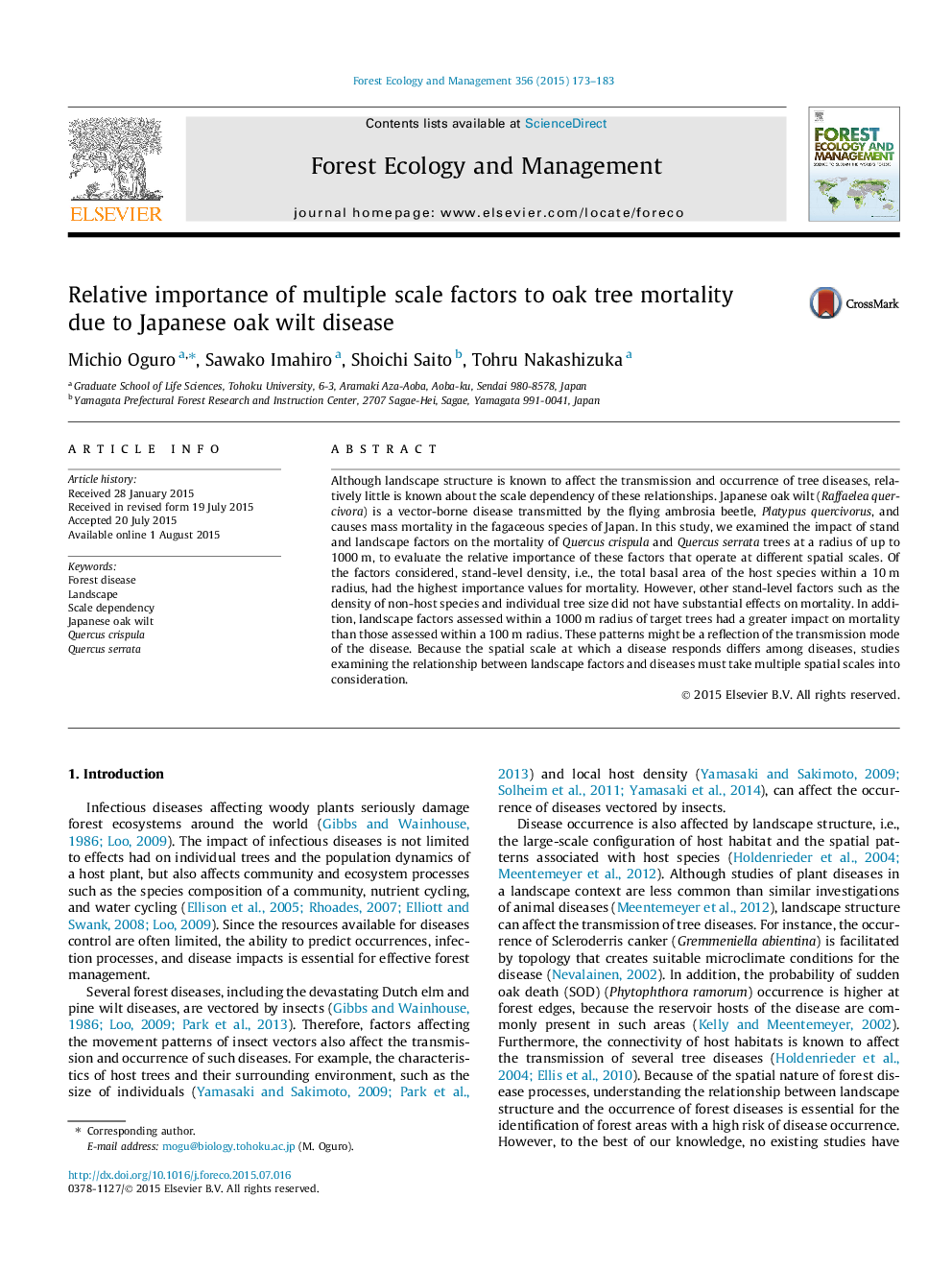| Article ID | Journal | Published Year | Pages | File Type |
|---|---|---|---|---|
| 86198 | Forest Ecology and Management | 2015 | 11 Pages |
•Factors affecting mortality of oak trees by Japanese oak wilt were examined.•Local host density is the most important factor affecting mortality.•Other local conditions did not have significant importance for mortality.•Landscape factors with a scale of 1000 m were significant factors for mortality.•Landscape factors with a scale of 100 m were of weak importance for mortality.
Although landscape structure is known to affect the transmission and occurrence of tree diseases, relatively little is known about the scale dependency of these relationships. Japanese oak wilt (Raffaelea quercivora) is a vector-borne disease transmitted by the flying ambrosia beetle, Platypus quercivorus, and causes mass mortality in the fagaceous species of Japan. In this study, we examined the impact of stand and landscape factors on the mortality of Quercus crispula and Quercus serrata trees at a radius of up to 1000 m, to evaluate the relative importance of these factors that operate at different spatial scales. Of the factors considered, stand-level density, i.e., the total basal area of the host species within a 10 m radius, had the highest importance values for mortality. However, other stand-level factors such as the density of non-host species and individual tree size did not have substantial effects on mortality. In addition, landscape factors assessed within a 1000 m radius of target trees had a greater impact on mortality than those assessed within a 100 m radius. These patterns might be a reflection of the transmission mode of the disease. Because the spatial scale at which a disease responds differs among diseases, studies examining the relationship between landscape factors and diseases must take multiple spatial scales into consideration.
